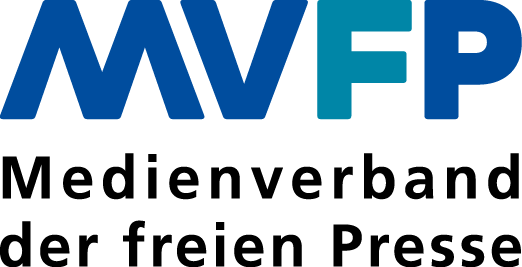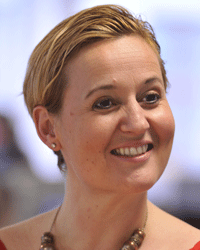Print Ad Reliant Business to Multi-Channel Subscriptions: Q&A with Natasha Christie-Miller, CEO of EMAP
EMAP, the UK-based B2B publisher, has a tenacious, inventive streak, which has served it well since it was founded in 1947 as a newspaper group. With print a fast declining part of the business, there has been a clear and profitable change of direction, says CEO Natasha Christie-Miller.
How has EMAP evolved?
Over the last three years we have transformed from a declining ad-reliant print business to the business we have today, which is a growing multi-channel subscriptions business.
Has this been the most challenging period in the company’s history?
The last three years has seen a period of transformation and growth, so it has been one of the most exciting and rewarding in EMAP’s long history. I’m delighted to say that we have turned the ship.
How important is the international market for EMAP?
One of our biggest brands, MEED, is based in Dubai and serves the Middle East’s construction, oil and gas industries – so the international market is important for us. We also have the World Architecture Festival (WAF) which is a truly global brand working in partnership with our architectural powerhouses, Architects' Journal and Architects' Review.
Where do you see the real international growth opportunities?
We are excited about the geo-cloning opportunities for some of our events, particularly within architecture and retail.
What is the domestic market like at the moment?
Each of the sectors we work with – health, retail and the built environment – has its own challenges and opportunities, but the number of professionals and organisations wanting to buy our content is continuing to grow and so are the groups of people paying for access to those valuable audiences.
Is digital contributing greatly to revenues and growth?
Digital is one of our strongest revenue streams with digital products representing 22 per cent of our revenue – up from 12 per cent in 2008. We’re seeing digital revenue grow each year as our customers embrace digital content and more and more people want to consume their content on tablet and mobile.
What other areas are creating revenue streams?
Our events business is extraordinarily strong: it represents 40 per cent of our entire revenue and has been growing double-digit for the last ten years. We have over 100 events with five that are over £1m turnover each in the UK and Middle East. The events bring communities together for learning at large-scale conferences with high-profile speakers, for networking and close-knit debate for chief executives. There is also our Awards programme, which celebrates and rewards excellence within our markets. We continually refresh and evolve the events portfolio to make sure the events are relevant and up-to-date for the markets we serve.
What other strategies do you have for growth and expansion?
One of the things that has had the biggest impact on our growth is our Corporate Subscriptions strategy. Three years ago, nearly all of our subscriptions were bought on an individual basis – so an individual would make the choice to subscribe to Retail Week or Health Service Journal. Today, 20 per cent of our subscriptions (which total 16,000) are bought as part of an organisational wide subscription that a company has chosen to buy to invest in their employees’ education, learning and as an business information source. A typical deal is 200 subscriptions, which would include 30 print, 50 apps, and 200 licenses to our desk-top. This is working so well because organisations renew at a higher rate than individuals, they don’t move on or change in the same way that individuals do. Individuals renew at 70 per cent and organisations renew at 90 per cent.
How is the advertising market at the moment?
Like most other media companies, print advertising revenue has sharply declined over the last few years, with organisations looking for other ways to reach their target audiences. Today print advertising makes up a fraction of our revenue – instead customers buy a wide range of other products, which range from sponsorship of our events, creating original content together, original research to digital products. We call these marketing solutions and they deliver over and above the awareness that print advertising can
What are your best performing brands – and are they likely to remain so going forward?
Our best performing brands are Health Service Journal and Retail Week, but lots of our other brands are performing exceptionally well, gaining new subscribers as well as seeing customer growth.
What new initiatives stand out?
In March 2013 we launched a major new product, Health Service Journal Intelligence. A segment of HSJ customers who provide essential services to the NHS had identified a need to understand the complex structures and future strategies of NHS Trusts so that they can work with Trusts more effectively. In response to this, we developed a data intelligence product that profiles the people, finances, geographical locations of every single one of the UK’s 475 health Commissioners and Providers. Layered on top of this data is HSJ’s unique journalistic perspective, intelligence and analysis, producing reports predicting the strategies of those NHS trusts in the future. The product was co-created over a year with eight customers that included businesses like KPMG and Pfizer. This product is high value and sells for an average of £11,000 per a year. Since the launch in March, we have smashed the revenue targets and expect the product to grow into a £4 million product in the next three years
Is there a core philosophy at the heart of EMAP?
One of the things that is central to our business and to our growth, is our obsession with customer joy. People use lots of different words to describe this – customer-led, customer happiness, customer engagement. But what I mean by customer joy is that customers derive real value from our products – they are helping them in their every day professional lives. Remembering that core purpose has been critical to our transformation over the last three years.
Where do you see the company in five years?
The future for EMAP is in digital and events, where we are seeing the most growth. In five years’ time, we’ll have created more digital data products and launched lots of brand new events. Print will definitely be a smaller part of the picture. But we are committed to creating and delivering content on the platforms that our customers want it on.
This interview was conducted by FIPP and was originally published on FIPP.com. See Natasha speak at the Digital Innovators’ Summit in Berlin on 23-24 March 2015.





